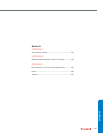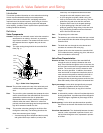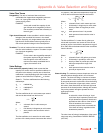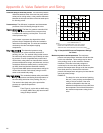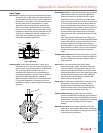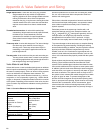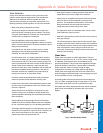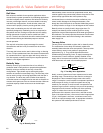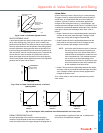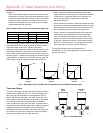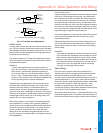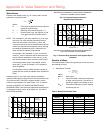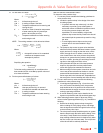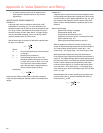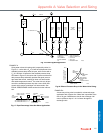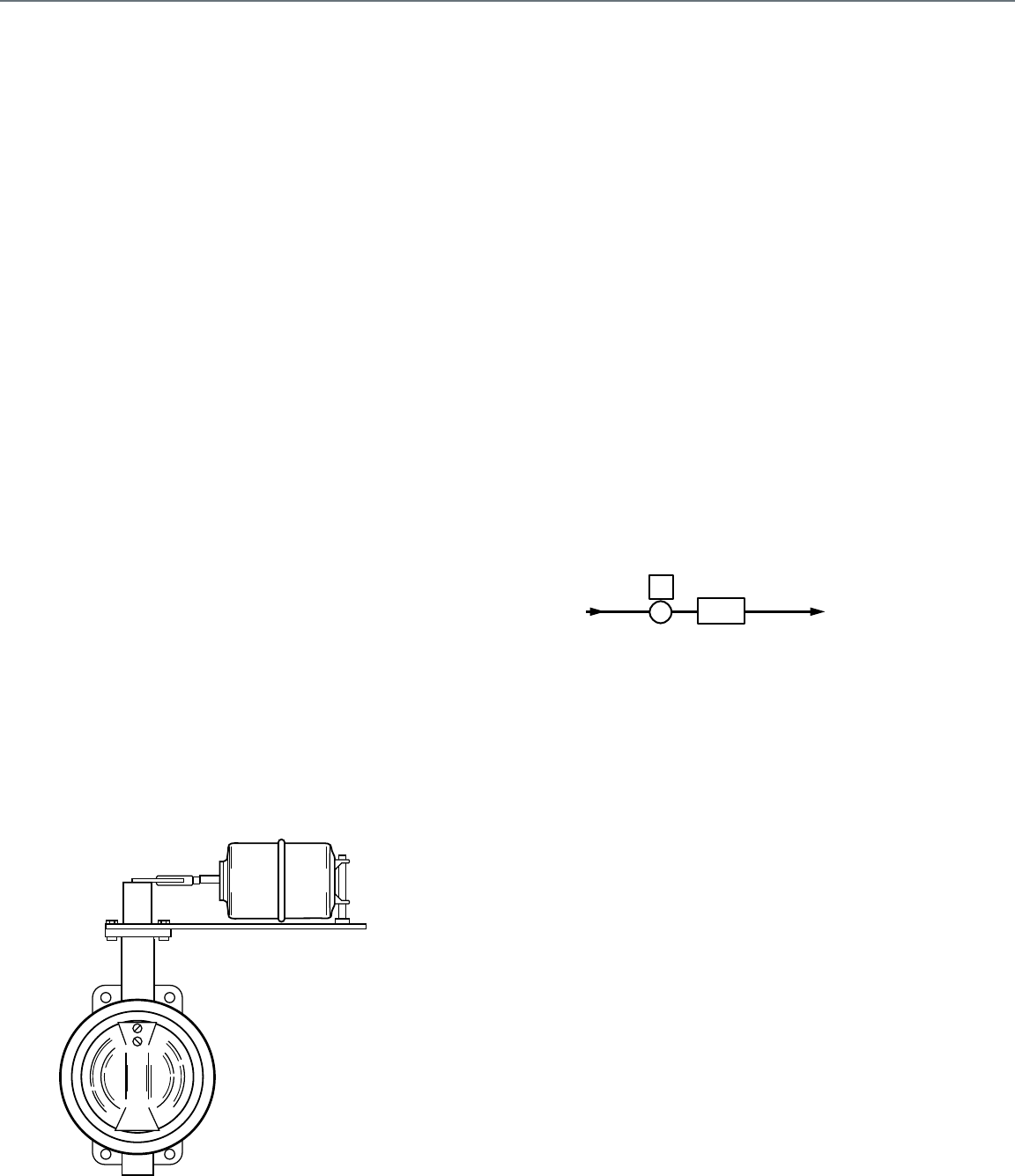
250
Ball Valve
Ball valves are available for two-position applications either
manual (hand) or power operated or for modulating applications
with direct coupled electric actuators. Ball valves are relatively
low cost, provide tight close off, and are available in two-way
and three-way configurations. As with all other valves, ball
valves must be properly sized to provide good flow control.
When used in modulating service, ball valves must be
specifically designed for modulating service as compared to
two-position service. Packing must provide leak-free sealing
through thousands of cycles to ensure trouble-free HVAC
service. The ball, stem and seals should be made of materials
that minimizes sticking and breakaway torque to achieve
smooth operation.
Two-way ball valves have equal percentage flow control
characteristics and flow in full-port models can be in either
direction.
Three-way ball valves can be used in either mixing or diverting
service. Full port models have linear flow control characteristics
for constant total flow. A popular option with 3-way valves is a
20% flow capacity reduction in the B port to equalize pressure
losses in a coil-bypass application.
Butterfly Valve
Butterfly valves (Fig. 6) control the flow of hot, chilled, or
condenser water in two-position or proportional applications.
Butterfly valves are available in two-way or three-way
configurations. Tight shutoff may be achieved by proper
selection of actuator force and body lining. The three-way valve
can be used in mixing or diverting applications with the flow in
any direction. The three-way valve consists of two butterfly
valves that mount on a flanged cast iron tee and are linked to an
actuator which opens one valve as it closes the other. Minimum
combined capacity of both valves occurs at the half-open
position.
Fig. 6. Butterfly Valve.
When butterfly valves are used for proportional control, they
must be applied using conservative pressure drop criteria. If the
pressure drop approaches the critical pressure drop,
unbalanced forces on the disc can cause oscillations, poor
control, and/or damage to the linkage and actuator, even
though the critical flow point is not reached. Modulating control
is usually limited to a range of 15 to 65 degrees of disk rotation.
Butterfly valves are usually found in larger pipe sizes. For
example, two butterfly valves could be piped in a mixing
application to control the temperature of the water going back to
the condenser. The valves proportion the amount of tower water
and condenser water return that is flowing in the condenser
water supply line.
Two-way Valve
Two-way valves are available as globe, ball, or butterfly valves.
The combination of valve body and actuator (called valve
assembly) determines the valve stem position. Two-way valves
control steam or water in two-position or proportional
applications (Fig. 7). They provide tight shutoff and are
available with quick-opening, linear, or equal percentage flow
characteristics. Control valves are typically installed on the
supply side of convectors and radiators, and the return side of
small-bore water coils used in fan-forced equipment.
Fig. 7. Two-Way Valve Application.
Ideally, a control system has a linear response over its entire
operating range. The sensitivity of the control to a change in
temperature is then constant throughout the entire control
range. For example, a small increase in temperature provides a
small increase in cooling. A nonlinear system has varying
sensitivity. For example, a small increase in temperature can
provide a large increase in cooling in one part of the operating
range and a small increase in another part of the operating
range. To achieve linear control, the combined system
performance of the actuator, control valve, and load must be
linear. If the system is linear, a linear control valve is appropriate
(Fig. 8). If the system is not linear, a nonlinear control valve,
such as an equal percentage valve, is appropriate to balance
the system so that resultant performance is linear.
M10403
SUPPLY
LOAD
RETURN
C2329
TWO–WAY
VALVE
Appendix A: Valve Selection and Sizing




